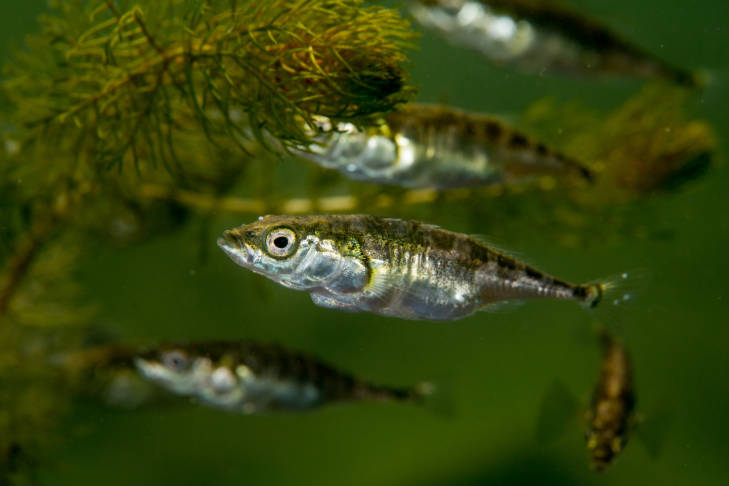After Alaskan Earthquake, Threespine Sticklebacks Quickly Evolved For Freshwater
 Threespine sticklebacks (Credit: Ryan Hagerty / US Fish and Wildlife Service, Public Domain)
Threespine sticklebacks (Credit: Ryan Hagerty / US Fish and Wildlife Service, Public Domain)After an earthquake hit Alaska in 1964, several islands throughout the Gulf of Alaska were lifted up by many meters. This meant that some of the marine life living in the saltwater of the Gulf were very quickly tasked with finding ways to survive in the new and challenging freshwater ponds formed on the islands. One of the species was the threespine stickleback, a tiny fish species that has baffled scientists as they appear to adapt to environmental changes very quickly. Previous estimates already had noted the fish as evolutionary speedsters, but in a 2015 study published in the journal Proceedings of the National Academy of Sciences, researchers at the University of Oregon dove into the evolutionary dynamics of sticklebacks to see just how fast these fish can change.
Timing the Evolution of Threespine Sticklebacks
To test the speed of threespine stickleback, scientists at the university gathered some of the threespine sticklebacks living in the island ponds and took them back to their lab for analysis. The quake’s timing provided them with an excellent opportunity to assess how quickly the sticklebacks had changed physiologically over a relatively short time period, from 1964 to the present.
The researchers opted to use rapid genome sequencing technology to gauge the changes. By using this approach, the U. of Oregon scientists could compare their findings to those from past investigations that also used rapid genome sequencing, including one that looked at the rates at which sticklebacks evolved after glaciers receded in Alaska about 13,000 years ago.
Sticklebacks from three islands were considered in the study, in addition to other sticklebacks gathered from the ocean waters surrounding them. Comparing the oceanic and freshwater sticklebacks allowed the researchers to easily note how much the two types of fish had diverged physiologically. From there, they checked to see how the changes stacked up with those registered over thousands of years in the previous glacier study.
Researchers saw that, just in the short time since the 1964 earthquake (relative to millennia), the phenotypes of freshwater threespine sticklebacks on the three islands had diverged greatly from sticklebacks living in saltwater. The results support the idea that the freshwater populations of the fish have evolved repeatedly over just the last half-century to become more suited to their new living situations.
In short, rather than taking a few millennia to adapt, threespine sticklebacks evolved in a matter of a few decades. The scientists found that sticklebacks have likely evolved over the long term to have different parts of their genome suited for freshwater or saltwater living, depending on their needs—something supported by a 2016 study on the evolution of threespine stickleback’s adaptive evolution of color vision.
Conclusion
In an Around the O article from the University of Oregon, researcher Bill Cresko explains, “We’ve now moved the timescale of the evolution of stickleback fish to decades, and it may even be sooner than that […] In some of the populations that we studied we found evidence of changes in fewer than even 10 years. For the field, it indicates that evolutionary change can happen quickly, and this likely has been happening with other organisms as well.”
Researchers believe that other species may hold the same evolutionary potential that sticklebacks have, and they expect that their results will help spur new questions into the area of evolution over short timescales. After all, there have been many other animals that have had to adjust to sudden shifts in their environments before.



Pingback: FishSens Magazine | Sticklebacks Have No Problem Evolving Eyes For Freshwater - FishSens Magazine